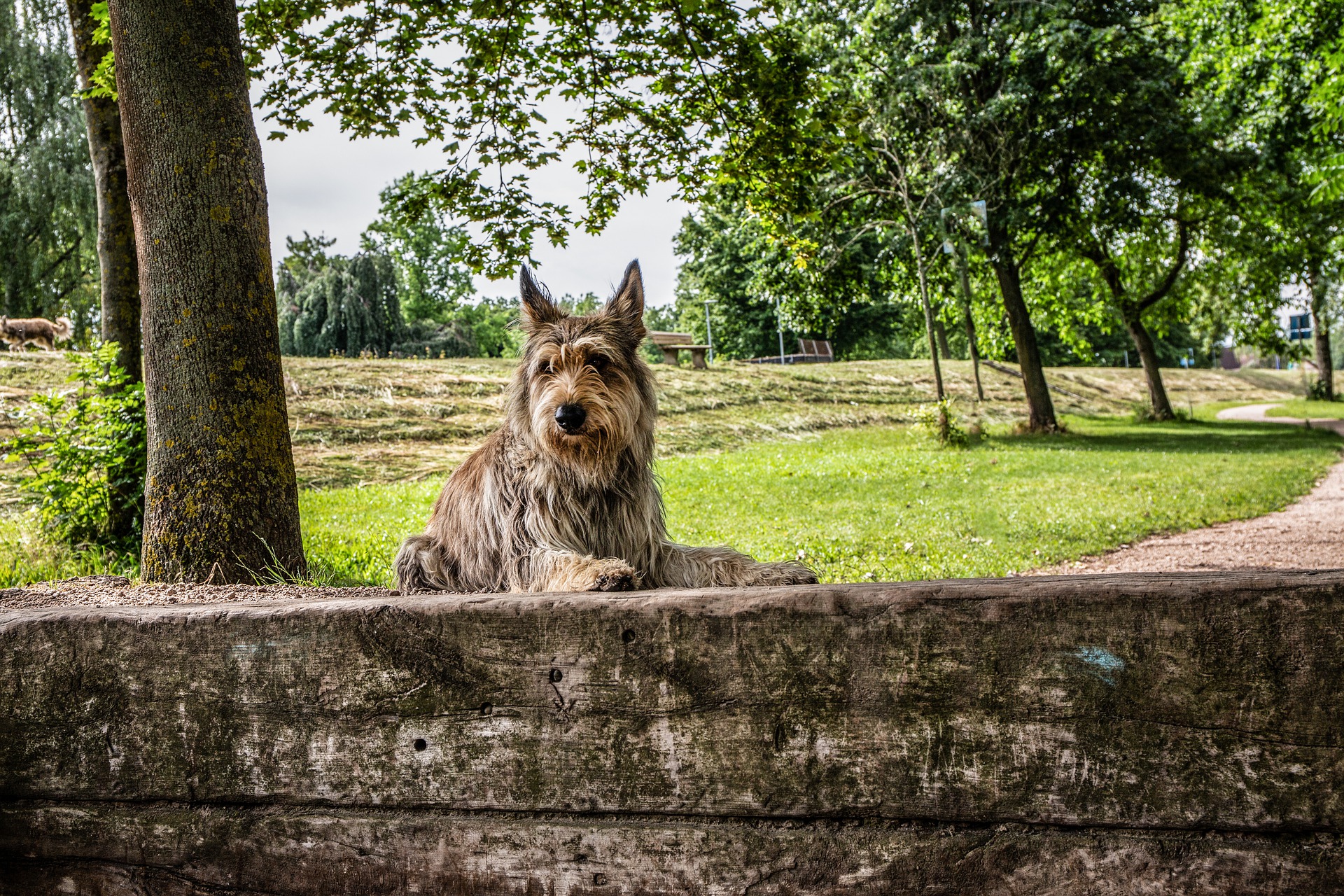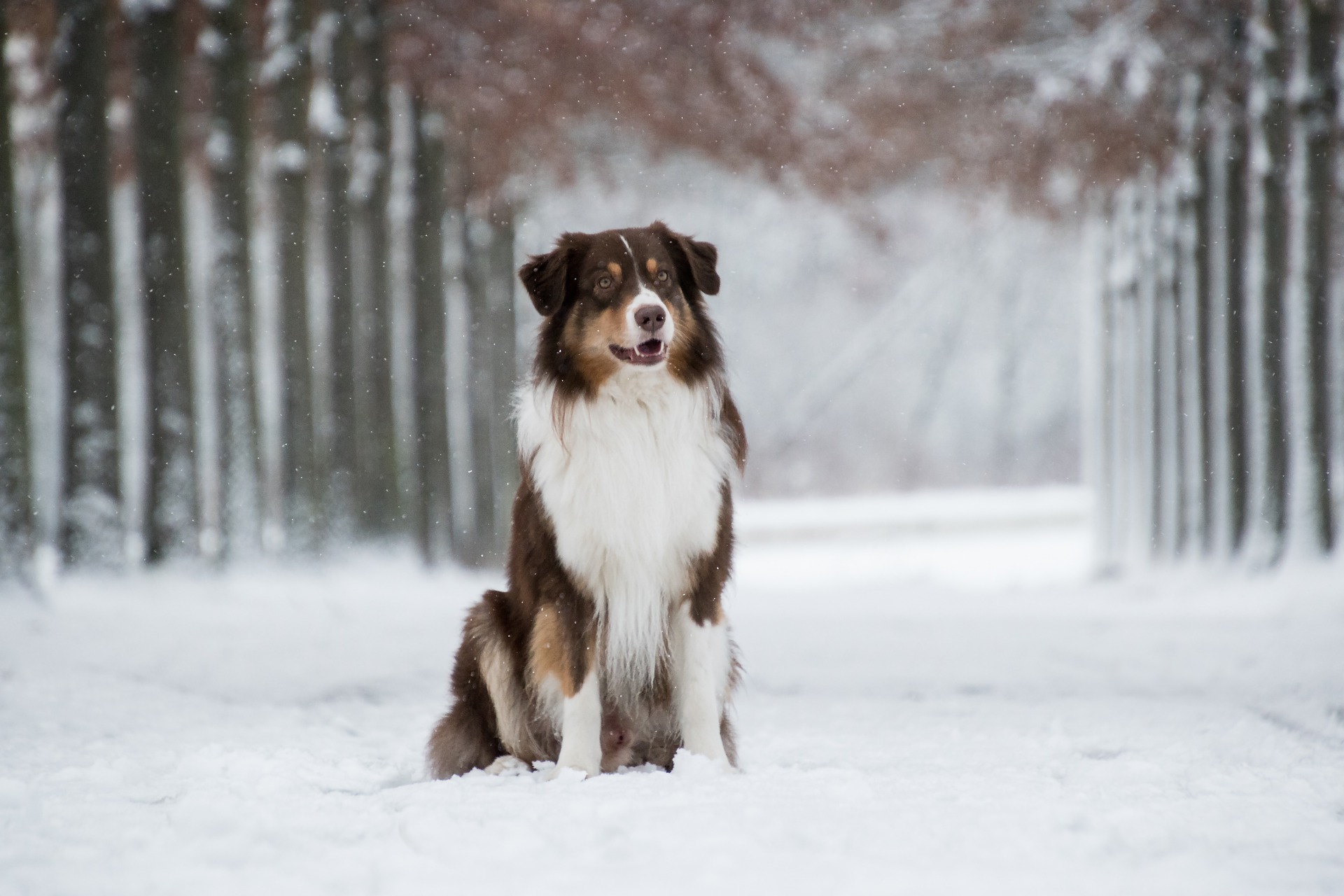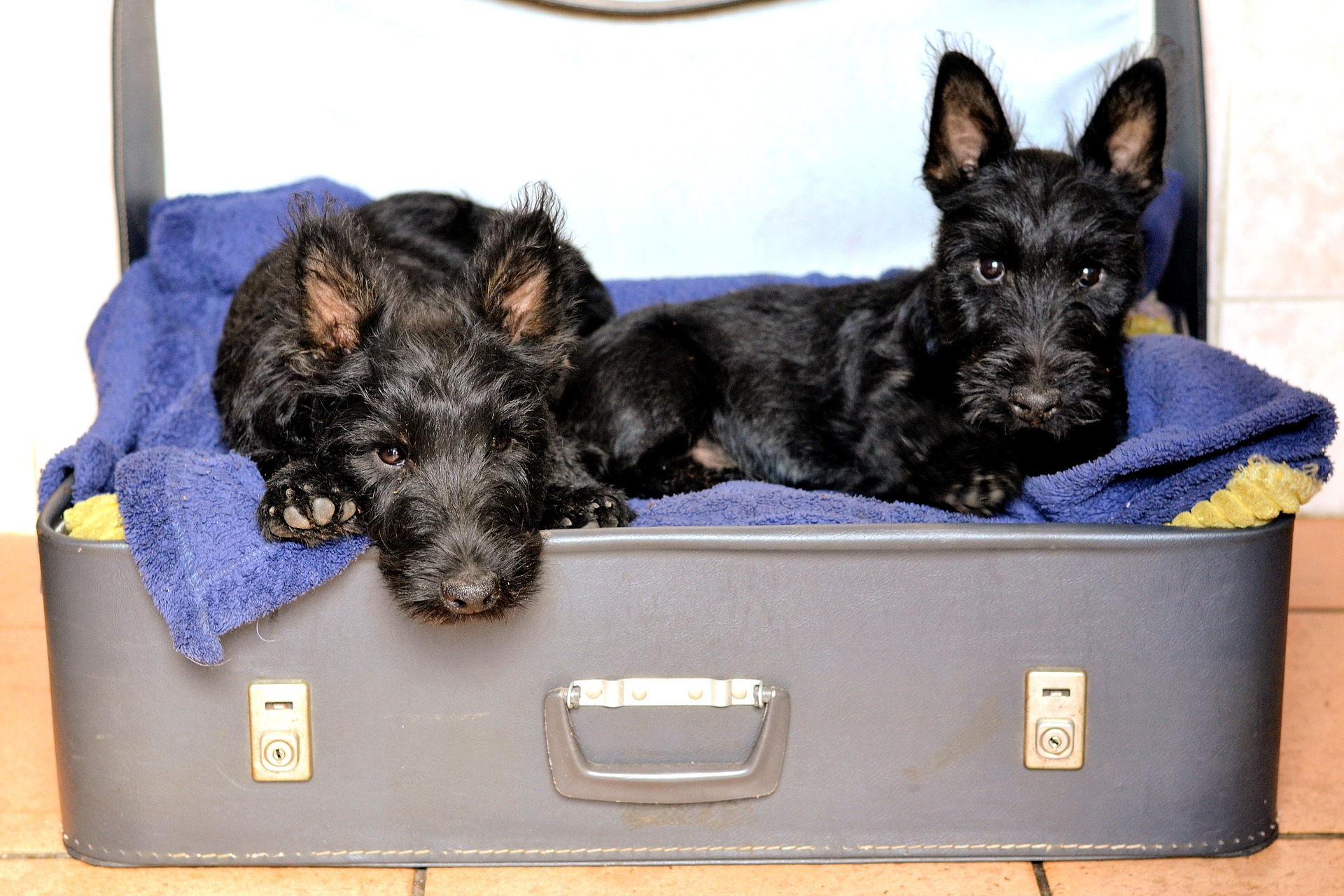
The Tax Collector’s Dog has a very interesting history. Despite being a relatively new breed, Dobermanns have quickly become a firm favourite in the dog world. Check out our guide below for an in-depth analysis of this breed.
Dobermann Breed Standards:
Kennel Club Member?: Yes
Dobermann Lifespan: 10-12 years
Dobermann Exercise: Over two hours per day
Height: Male 26-28 inches Female 24-26 inches
Weight: Male 34-45 kilograms Female 27-41 kilograms
Hypoallergenic: No
The Doberman Pinscher is a demanding breed that requires a great deal of care. But the results are rewarding for those that give this dog the time, training and love they need. This breed is highly intelligent and is well-known for its work with security, military, and police.
Over the years, Dobermanns have built up a fearsome reputation, but that hasn’t stopped them from taking 18th place on the AKC breed rankings as of 2020. Their elegant appearance attracted many, with author Marguerite Henry describing the Dobermann as ‘the true aristocrat of dogdom.’

Temperament
The Dobermann temperament is deeply loyal, protective, alert, fearless, and obedient. Although the breed is regularly stereotyped as aggressive, they actually have a gentle and loving personality. Compared to other breeds, Dobermanns will tolerate being left alone.
Given the right training, socialization, and exercise this breed will be even-tempered. Studies have shown the Dobermann is one of the most intelligent dog breeds. Experienced owners are recommended for this canine.
This watchdog is reserved with strangers and used to have their ears cropped to enhance their hearing ability! Dobermanns are great guard dogs and will protect their family against any threat. It’s important they’ve been well-socialized with strangers as they may become overly protective.
For this breed, older children are better suited. Doberman puppies are boisterous and could accidentally injure smaller children. Devoted to their family, this breed is affectionate, sweet and protective of the kids in their household. The energetic side of the Doberman personality makes them great playmates for kids.
Dobermanns are wary of other dogs and may interpret them as a threat. Early socialization is the key to developing healthy friendships with other canines. Well trained Dobermans will get along well with other dogs. Male Dobermanns have a natural instinct to assert their dominance over other males. This could spark a fight.
Characteristics
Take a look at the positive and negative Dobermann traits below:
Positives:
- Great watchdog & guard dog
- Minimal grooming maintenance required
- Suitable for police, military and search and rescue work
- Independent and can be left alone
- Hihgly intelligent & easy to train
Negatives:
- Not suitable for first-time owners
- High exercise requirements
- Sensitive to the cold
- Dominant, requires a firm owner
The Doberman is a medium-large breed featuring a muscular, athletic build and a long, narrow head. Their coat colours as listed by the Kennel Club Breed Standards are found in Black & Rust, Blue & Rust, Brown & Rust, and Fawn & Rust. Colour Dilution Alopecia is commonly seen in blue and fawn coats. This can cause bald spots and a dull and thin coat.
History
The Doberman Pinscher originated from Germany in the 19th century. They were created by Karl Friederich Louis Dobermann, a dog breeder and tax collector from Apolda. His goal was to produce an intimidating protection dog that would assist him in his jobs.
It’s no surprise that tax collectors faced a large amount of hostility when on their rounds. During their initial creation, the Dobermann dog was prized for its ferociousness and aggression. But it’s also poised and trained to react upon command, a priceless trait.
After Karl Dobermann’s death, Otto Goeller created the National Dobermann Pinscher Club. He refined and perfected the breed during the 1890s. Soon after, their status as a working dog propelled and it didn’t take long for the police and military to notice the breed.
A number of breeds are thought to have contributed to the Dobermann’s creation. These include the Rottweiler, German Pinscher, Weimaraner, Greyhound, and the Manchester Terrier. The AKC also list the Black and Tan Terrier and the Old Shorthaired Shepherd as contributors.
By World War II the United States Marine Corps began using the Dobermann as their official war dog. They were used as sentries, messengers, search and rescue dogs and guard dogs. Their excellent sense of smell could also detect mines and enemy locations.
Nowadays modern breeders have reduced the heightened aggression that was once seen in the Doberman. Despite being under 150 years old, the breed has already won four Best in Show titles at the Westminster Kennel Club Dog Show in 1939, 1952, 1953, and 1989.
Exercise & Grooming
Dobermann dogs need an incredible amount of daily exercise. Owners will need to dedicate over two hours per day to their activity needs. They’ll resort to destructive behaviours if their exercise requirements aren’t being met.
This breed makes a great hiking and jogging partner. Dobermanns are fantastic companions for active owners or families. They’re also good dog sports competitors and excel in Schutzhund (protection dog), agility, obedience, rally, tracking, and flyball.
Many owners don’t realize that mental stimulation is just as vital as exercise. Dog sports are one way of getting a dog’s mind ticking over. Interactive games, puzzles, hide and seek, toys, and even a sniff around the park are some ways to mentally stimulate a dog.
Doberman Pinschers are fairly low maintenance on the grooming scale. Their short coat sheds moderately and only needs a quick brush once a week. A rubber grooming glove will remove the dead fur whilst redistributing their natural oils.
Baths should be given every 6-8 weeks. Their short fur can air dry naturally. Due to their long floppy ears, bacteria and debris build up quicker. Clean the ears weekly to prevent infection. Nails need a trim fortnightly and vets request teeth are brushed daily.
Health
Find out the breed-related health issues of the Dobermann Pinscher below:
- Hip Dysplasia: Poor development of the hip joint will cause joint laxity. Affected dogs will experience pain, lameness, and inflammation followed by arthritis.
- Gastric Dilatation Volvulus: The stomach twists trapping gas and food inside. This can be fatal and urgent veterinary attention is required.
- Wobbler Syndrome: This disease affects the spine within the neck thus affecting the nerve signals from the brain to the body. There may also be issues with the bones inside the neck. A wobbly gait is the first noticeable sign of this condition.
- Von Willebrand’s Disease: A bleeding disorder caused by a lack of Von Willebrand Factor (vWF) protein. vWF is used to create platelets that clot blood, as a result, excessive bleeding is experienced.
- Hypothyroidism: A metabolic disorder affecting the dog’s bodily functions. Symptoms include hair loss, weight gain, lethargy, lack of tolerance to the cold, and hair and skin changes.
- Dilated Cardiomyopathy: This disease thins and weakens the heart muscle. As a result, it is unable to effectively pump blood around the body. Typically fatal.
- Persistent Hyperplastic Primary Vitreous: This eye condition occurs prior to birth and is concurrent with Retinal Dysplasia
Dobermann Training
Dobermanns require a firm owner that won’t let this dog push them around! In a family setting, this breed will be inclined to listen to the person that gives them the most attention. As an intelligent breed, training is relatively easy for those with experience.
Protective by instinct, Dobermanns will always be on the lookout for a threat. Owners will need to reassure their dog that not every person knocking on the door is trouble! A Dobermann can quickly spiral into overreactive behaviour due to a lack of socialization.
Dobermann puppies can be highly destructive in their early years. Owners will need to manage this behaviour by giving their dog enough toys and exercise to unleash their energy. A lack of exercise will lead to destructive behaviours.
Crate training is an effective method for a Dobermann puppy. It’s a separate space that feels both safe and comforting. It should be big enough to hold their bed and toys. This breed takes well to crates as they enjoy having a space of their own. To speed up housebreaking, crates may also be used!
Dobermans are impeccable guard dogs and should begin obedience training at 8 weeks old. These fiery canines aren’t for the faint-hearted and have even intimidated unprepared owners. Reward-based training works well with this breed and consistent owners will quickly earn their respect.

Dobermann Interesting Facts
- Stanley Coren, a psychologist and neuropsychological researcher wrote on the history, mental abilities and intelligence of dogs. Under the obedience command training category, he listed the Doberman Pinscher as the 5th most intelligent breed!
- During the Second Battle of Guam in 1944, Cappy, a Dobermann saved 250 U.S Marines by alerting them to Japanese soldiers. He and 24 other Dobermanns have had their names inscribed on America’s first official war dog monument. Kurt, another Dobermann was the first dog to be mortally wounded, and the first to be buried in what we know today as the War Dog Cemetary. Kurt is the bronze dog sat on top of the World War II War Dog Memorial.
- In Karnataka, India, a female Doberman Pinscher named Tunga has revealed over 60 thefts and 50 murders! In one case, she ran over 12 kilometres to catch a murderer! At the age of 10, Tunga is a proven legend and local hero!
- Dobermans are regularly seen on the big screen! Some of their most famous movies include The Doberman Gang(1972), Alex & the Doberman Gang (1980), The Daring Dobermans (1973), Ruthless people (1986), Suburbia (1983), They Only Kill Their Masters (1972), and many more!
- Ch. Borong the Warlock is the most successful Dobermann, winning Championship titles in three countries. Some of his winnings include 30 Speciality Show bests, 230 Best of Breed, 6 all-breed Best in Shows, and 66 working groups. He won first place in a Top Ten competition judged by five Dobermann breed specialists. He is also the only Dobermann to win three times at the Doberman Pinscher Club of America National Specialty Show.













































